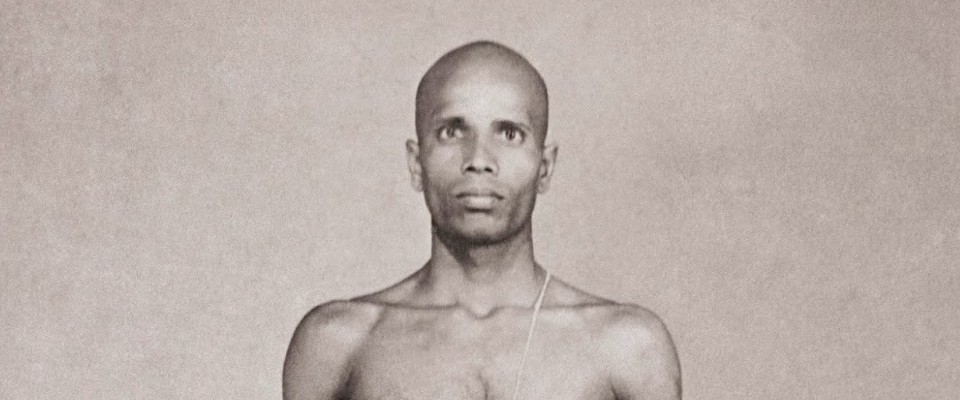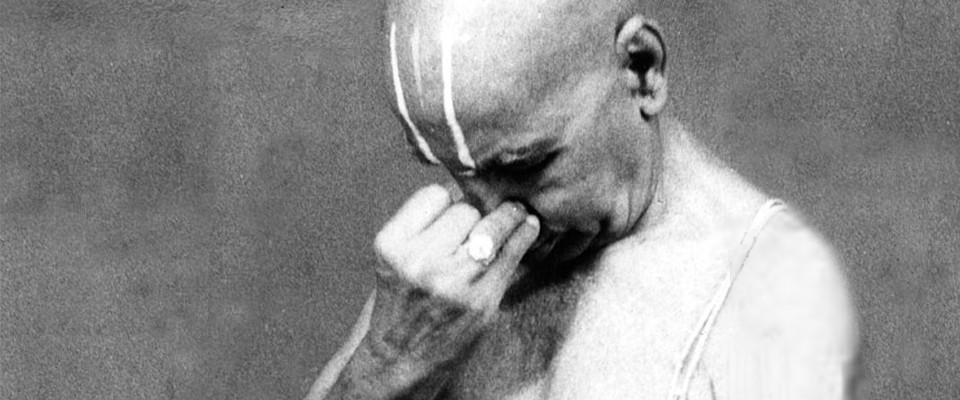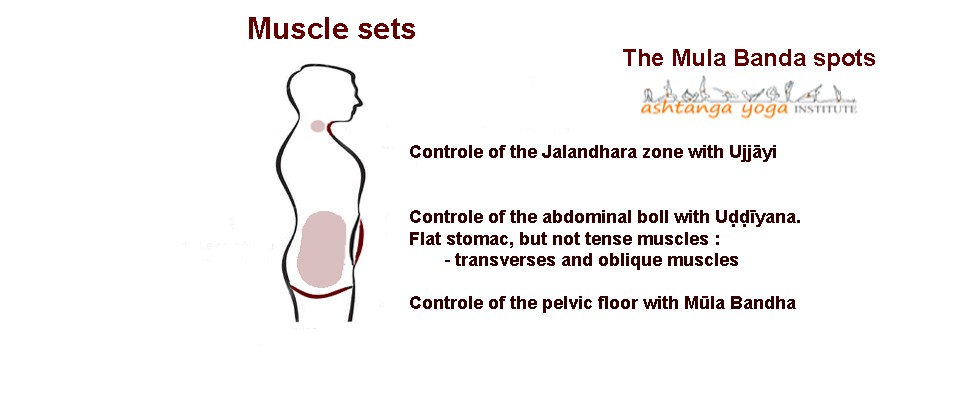In the Ashtanga yoga practice, the eyes are kept opened. In the same way, like when we drive a car, a motorbike or a bike, we look at the road in the direction where we are going, otherwise… we have an accident.
The gaze in Ashtanga Yoga is the path towards plenitude…
«Oh yogi, do not practise the āsana(s) without dhristi…»
Vāmana Ṛṣi Yoga Korunta
Drishti, is the concentration/focalisation of the gaze on a point on the body during the execution of a posture which is held during several breaths.
The benefits of Drishti in the asana practice :
- Develops concentration
- Improves the direction of the nervous flow
- Gives movement to the connective tissues (tissues that envelope our muscles, also called fascia)
The first verse (sloka) from Yoga Korunta mentions the 9 drishti :
- The tip of the nose « Nasagrai »
- Between the two eyes (3rd eye) « Nétriore ma diai »
- The navel « Nabit chakaam staté wad chã »
- The middle of the hand « Hastha grai »
- The middle of the foot « Padãyour grai »
- A point situated in the horizontal right « Parsvai yur ho béyur hãpi »
- A point situated in the horizontal left « Parsvai yur ho béyur hãpi »
- The thumbs, hands together in prayer « Angusta ma diai »
- Look at the sky (gaze upwards) in the vertical line of the eyes « Urdhva drishti hi »
” The yogi focuses his/her visual energy between the two eyebrows, with equal time in the inhale and in the exhale that go through the nose, master of his/her sensitive, mental and intellectual faculties, the Wise (noble-minded) reaching towards liberation, his/her ultime end, is separated from desire, from fear and from anger; he is freed forever.”
Bhagavad Gītā, V, 22/28


